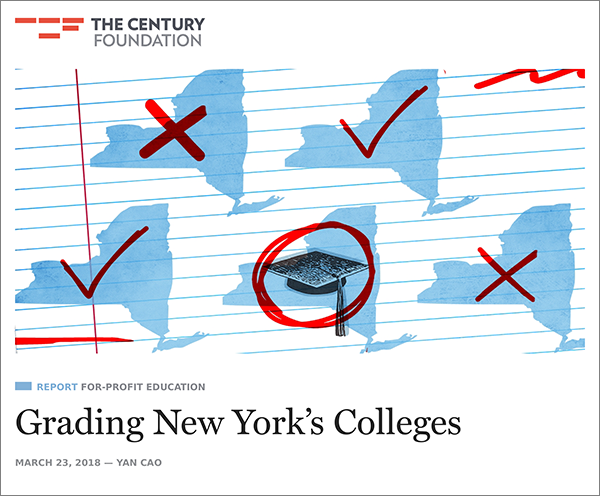New York invests more than $300 million a year in state scholarship funds to private colleges, more than any other state. Most of this comes through the Tuition Assistance Program, or TAP, for students attending nonprofit institutions.
More than a fifth of those funds, however, go to for-profit schools.
According to Yan Cao, a fellow of the Century Foundation who presented to the NYSUT Higher Education Policy Council last weekend, the state’s investment in higher education should improve equity, reduce debt, and yield broader access to high-quality degrees. Unfortunately, she said, based on analysis of the latest federal data, some New York schools, notably for-profit schools, are doing the opposite.
“I see this as similar to the big tobacco companies,” said Stephen Rechner, president of the United Clerical and Technical Staff union at New York University, a member of the NYSUT Board and the policy council. The data show that people are being hurt by this profiteering, and it needs to be addressed to ensure accountability, he said.

- Read the Century Foundation's report. Web | PDF
Cao looked at three measures of quality in higher education: employment outcomes for graduates; financial distress from student debt and default; and investment in education, or what share of tuition revenue — including taxpayer-funded grants — is allocated to student instruction. The foundation compared three categories: public colleges and universities, private nonprofits and for-profits
“For all three measures of quality, the outcomes show startling disparities between schools that are public, nonprofit, and for-profit,” Cao reported.
- 38 percent of for-profit schools leave a majority of their students earning less than the average high-school graduate.
- 25 percent of New Yorkers who default on student loans attended for-profits, even though these schools enroll only 7 percent of students.
- By combining poor performance and targeted recruitment, for-profit schools exacerbate inequality. Nearly three-quarters of African-American students who attend for-profit colleges default within 12 years, while the rate is only 25 percent at nonprofit and public colleges.
Key to theses outcomes, Cao explained, is how the institutions spend the funds they receive. For-profit schools charge more but invest less in student education. For example, in 2015, for-profit schools spent only 41 cents of every tuition dollar on instruction; nonprofits spent 86 cents.
New York’s support for private higher education illustrates its commitment to access, Cao said. “Unfortunately, some colleges — concentrated in the for-profit sector— benefit while leaving students with more debt, worse employment prospects and higher default rates. “
The combination of debt and dismal employment outcomes for students is particularly troubling given the needs of the low-income and minority students these schools disproportionately enroll, she said.